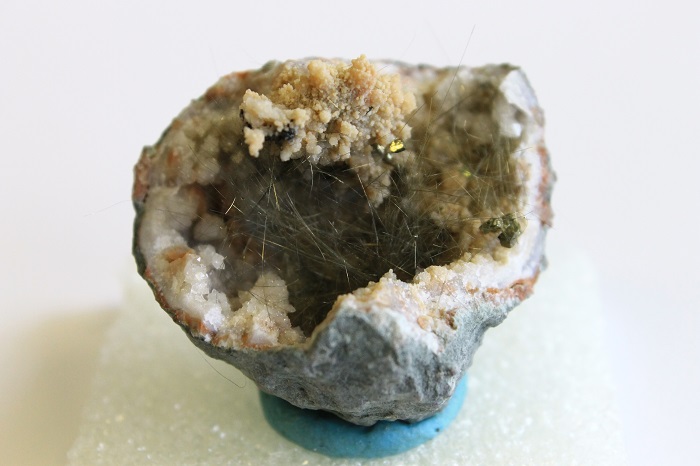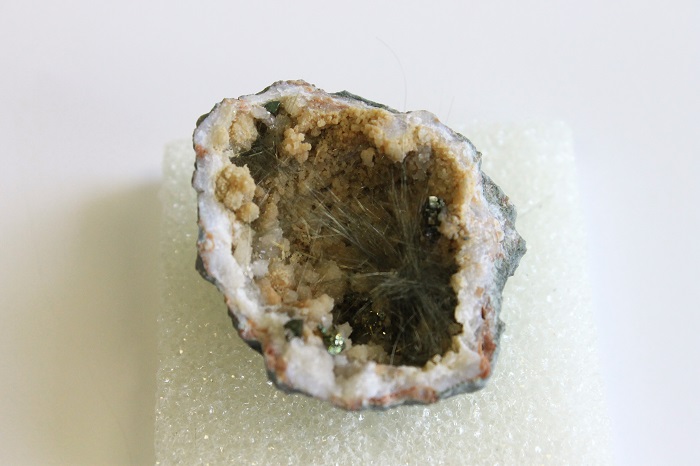Specimen of the Month from the KGS Collection: Millerite
Millerite is a nickel sulfide found in acicular (needle-like) crystals in quartz geodes at Halls Gap in Lincoln County, Ky. Although millerite occurs in many areas of the world, the Halls Gap location is world famous for these small geodes. Many mineral books have photographs of millerite from this location, and many rock shows and collectors have specimens of Halls Gap millerite. The location is now closed to the public, because it is on an outcrop along heavily traveled U.S. 27 and is considered dangerous for the public.
Millerite is usually yellow or brass colored, iridescent, and occurs in splays or radiating masses of needle-like crystals within the geodes. It can have pseudomorphs (crystals made of one mineral but taking the form of another crystal they have replaced) such as honessite or jamborite, a hydrous nickel sulfide, which can be yellow or greenish in color. Pyrite, chalcopyrite, and bournite (iron and copper sulfides) usually accompany millerite. Often, the millerite crystals will penetrate or intersect the pyrite cubes in an artistic display of mineral forms.
Sometimes the copper is abundant and will give a green or bluish tint to some of the crystal faces of pyrite and chalcopyrite. The long, slender crystals of millerite may also show the effects of stress during formation by having a distorted growth pattern in their symmetry.
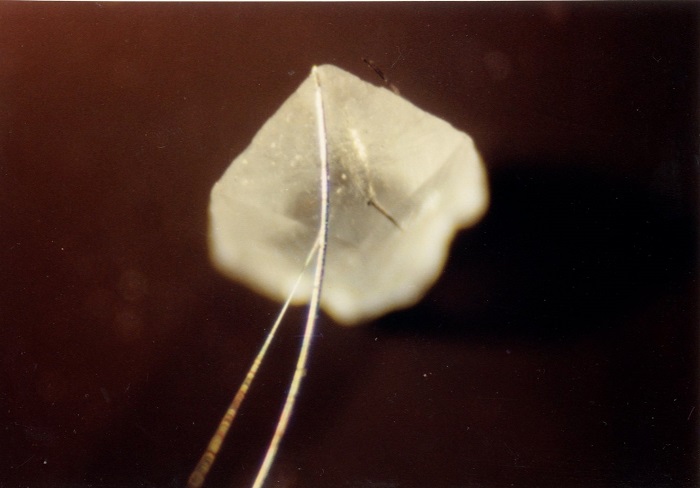
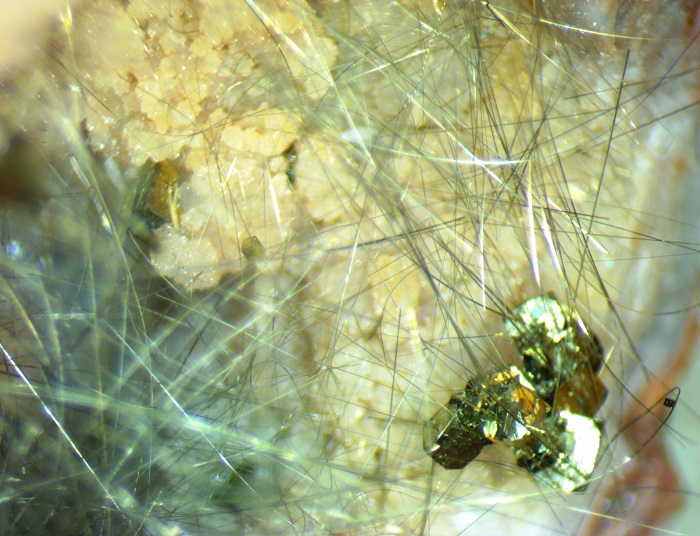
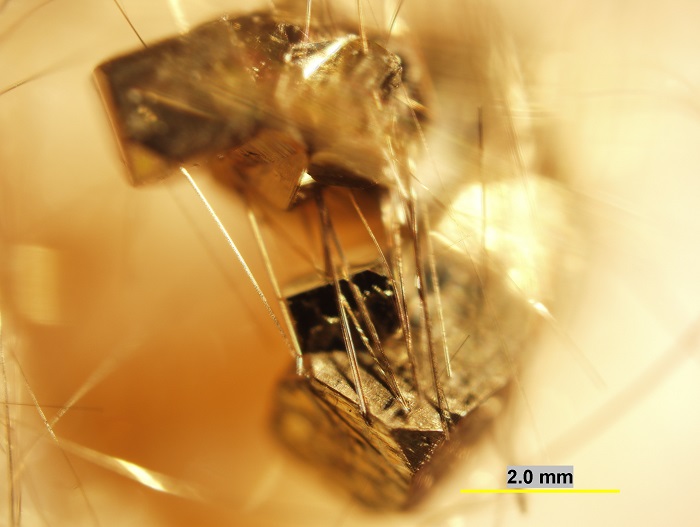
View all archived specimen of the month from KGS collection

